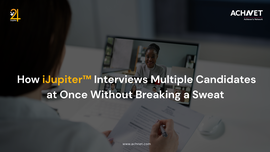The Top 10 Higher Education Issues We All Agree On
Last Monday an organization we hold in high regard, the New America Foundation, posted a piece comparing Republicans who defend for-profit colleges to climate change deniers.
There are two fundamental problems with this strain of argument. The first is that while there’s only one climate (which is changing), there are thousands of for-profit colleges, some of which remain “predatory,” (the pejorative du jour), and some producing a higher return-on-investment for students than many traditional colleges. The second is that this piece re-fights yesterday’s war. When, in an interview with Politico, Steve Gunderson, the former Republican Congressman from Wisconsin who heads the industry association (Career Education Colleges and Universities) differentiates between schools that are filling real employment gaps and those that offer basic degree programs (“Those schools still exist but they’re not part of our sector anymore”), the battle against “predatory” for-profit colleges has been won.
It’s easy to see how extreme partisanship could extend beyond for-profit colleges into core higher education. Raucous debates about immigration and freedom of speech are highly relevant to colleges and universities. So as we witness today’s inauguration of President Trump, it’s important to recognize that the many challenges and opportunities facing higher education lend themselves to bipartisan consensus – perhaps more than any other area of public policy. Because areas of agreement in higher education far exceed areas of disagreement, both sides of the aisle ought to be able to support a reauthorization of the Higher Education Act that will materially improve outcomes – particularly for the nearly half of working adults (and especially young adults) who feel that no matter what they do, they’re unable to get ahead and, in fact, are falling behind, and whom traditional colleges and universities are not adequately serving.
One area of agreement is that rankings are far too important in setting direction for America’s colleges and universities. To draw attention to this fact (and, cravenly, to draw rankings-obsessed readers), what follows is a ranking of what we all agree on as President Trump takes office.
#1. Completion is the most powerful lever.
While college affordability remains a crisis and the “free college” movement has pushed accessibility to the fore (creating a new zone of partisan disagreement), with drop rates approaching 50% at many four-year institutions and 80% at many two-year colleges, there can be no disagreement that “solving” completion would produce many more college graduates than “solving” accessibility. The fact that there’s no “free college” silver bullet to the complex completion challenge shouldn’t blind us to the potential impact of ensuring that every matriculating student completes with a credential of value.
#2. Bachelor’s degree “addiction” is hurting students.
“For too long a college degree has been pushed as the only avenue for a better life,” said Betsy DeVos at her confirmation hearing on Monday, agreeing with Senator Tim Scott (R-S.C) that bachelor’s degrees are an “addiction.” “We need to embrace new pathways of learning.” Although DeVos referenced vocational training as examples of new pathways, in the absence of any material evidence, it takes a Candide-like idealist to continue to insist that a bachelor's degree is the optimal or only path to establishing the core cognitive and non-cognitive executive function skills that lead to successful white collar careers – particularly given the completion challenge. Alternative pathways and credentials that measure and guarantee outcomes will emerge for a wide range of professions and should be strongly encouraged from a public policy perspective.
#3. Colleges need to do much more to help graduates get great jobs.
The single biggest change in higher education over the last decade doesn’t relate to rankings or even MOOCs, but rather the reason students enroll in the first place. According to New America, today’s students enroll for very practical reasons: to improve employment opportunities (91%); to make more money (90%); and to get a good job (89%). While studies continue to show terrific premiums for college educated workers, the data in question invariably come from cohorts that have been out of college at least 10, and often 20 or 30 years. Unprecedented unemployment + underemployment rates for new graduates produced by the Great Recession has changed student behavior – likely unalterably given the affordability crisis. As a result, traditional arguments that “college prepares you for your fifth job, not your first job” increasingly fall on deaf ears; students know that if they don’t get a great first job, they’re much less likely to get a great fifth job. This means colleges need to do more than just increase career services budgets; they must ensure students are equipped with the technical skills employers increasingly require for entry-level positions.
#4. Employers bear much of the blame.
If Millennials are having increasing difficulty “launching” into the world of employment and self-sufficiency, blame employers as much as colleges. Employers have blithely and blindly driven credential inflation, insisting on bachelors and increasingly master’s degrees as requirements for positions that may not require them. Opaque Applicant Tracking Systems and imprecise job descriptions have turned getting in front of a human hiring manager into a “rigged” game, particularly for new graduates with little to no work experience. And while employers have put up technological walls to employment, they’ve been content to continue campus-based recruitment at a select number of schools because that’s the way it’s always been done. In contrast, utilizing new People Analytics technologies to identify competencies that are predictive of success, incorporating these skills into job descriptions, and proactively searching among passive job seekers and current students will become a competitive advantage for farsighted employers. This will facilitate a shift from degree- and pedigree-based hiring to competency-based hiring, which will go some way to ameliorating items #1 – 3 while also increasing workforce diversity.
#6. Outcomes should be about “distance traveled”
It may well be that the reason Harvard is viewed as a world-class university while your local school is not is entirely due to the caliber of inputs (i.e., student talent) that the institution attracts. So when we measure outcomes, we need to ensure we’re not focusing on metrics that correlate entirely with inputs, but rather on “value added” by the institution to students. “Distance traveled” is value added with a twist: providing extra points to institutions with a demonstrated track record of enrolling low SES students and producing strong education and employment results. The critical importance of distance traveled in education and employment will be reified when employers see data demonstrating that, at the candidate level, distance traveled is consistently predictive of career success.
#7. Technology is key to improving learning.
While the Massive Open Online Course has become a Massive Open Online Joke and the Baumol effect continues to limit the ability of one faculty member to effectively teach hundreds (let alone thousands) of students, utilizing technology in teaching can go a long way to improve efficacy for a given cohort. Lectures must be replaced by not only flipped classrooms, but dynamic classrooms that require students to view lectures ahead of time and answer formative assessments so faculty are able to focus classroom time where students have an incomplete understanding. In dynamic classrooms, students are engaged in active learning and utilize mobile devices to respond to follow-up questions in real time. Data gathered before and in class can feed predictive analytics systems that guide both interventions and student expectations.
#8. Assessments are needed to save the liberal arts.
It’s likely that you’re a proud product of a liberal arts education and believe it’s the best way to prepare students with the core cognitive skills that produce career success across a wide range of professions (such as your own). Nonetheless, over the past several decades we have seen an exodus from liberal arts into pre-professional programs (business, healthcare, education, technology) – one that is more pronounced for lower SES students. Unless and until colleges and universities are able to document that liberal arts programs actually produce the outcomes we’ve taken on faith, this exodus will continue and liberal arts programs will be increasingly a plaything for rich kids (who’ll use connections to get good first jobs, so it doesn’t matter what they study). Incorporating assessments demonstrating critical thinking, problem solving and situational judgment is the most likely way to convince employers (and students) of the value of our beloved liberal arts programs. As Purdue President Mitch Daniels has said, “higher education has to get past the ‘take our word for it’ era. Increasingly, people aren’t.”
#9. Follow the money.
Today, colleges and universities get paid no matter what. If we’re serious about accomplishing any or all of the above, the federal government has two choices: it can condition funding on outcomes (à la Gainful Employment) or require schools to put “skin in the game.” It’s possible the Trump Administration and Republican Congress will do both, but my money is on the latter, which will come in the form of income share agreements (ISAs). Requiring colleges and universities to contribute a defined percentage of federal grants and loans in “risk capital” – sourced internally or externally – for each and every student will do more than any other single change to align institutions’ interests with student outcomes. It will be hard to make any progress in changing behavior as long as the current financing regimen remains in place.
#10. Colleges are worth saving (especially the one you attended!).
As enrollment patterns – exacerbated by demographic trends – continue to shift, an increasing number of colleges will experience declining revenue, particularly smaller colleges and universities outside of major urban areas. Because there are natural limits to discounting, out-of-state students, and television revenue for Division I football teams, most of these institutions will seek new survival strategies, including following the Sweet Briar playbook and sending out an S.O.S. to alumni. Recognizing that every college and university – to a greater or lesser extent – represents the apex of civilization, and is both a major asset to (and employer in) the local community and a source of pride for alumni, it’s imperative to stay focused on the big picture. We don’t have enough resources to save every college (or, for that matter, to discharge every student loan). As higher education changes over the next four and eight years, it’s critical that we avoid the myopia that has led to the many challenges plaguing the current system.
There you have it. University Ventures is proud to have produced another higher education ranking – hopefully less deleterious than some others and perhaps a small contribution to new policies that even crazy climate change deniers would have difficulty disputing.
This article originally appeared here.

.jpg)



